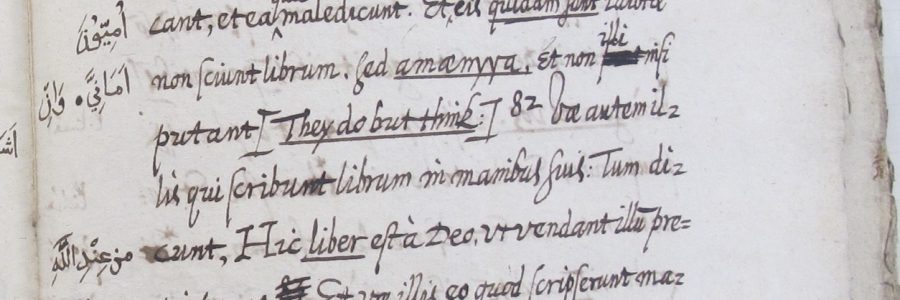
The First Islamic Material at Cambridge University Library: Unearthing Bedwell’s Forgotten Manuscript
Dr Majid Daneshgar is Associate Professor of Area Study at the Center for Southeast Asian Studies, Kyoto University, Japan. He was previously Munby Fellow 2022-23 at Cambridge University Library (CUL).
It is a common belief among scholars that the first oriental manuscript donated to CUL in 1631 was a copy of the Qur’ān (MS Ii.6.48) belonging to William Bedwell (1561–1632), a leading British Arabist and translator of Arabic materials to English.[2] He was an influential figure in establishing Arabic and Islamic studies in England. He produced several works on the Bible, lexicography, and Muslim literature. But he is also known because of his voluminous but incomplete Arabic-Latin dictionary which remained at CUL after his death. As an enthusiastic scholar, he established strong relationships with French and Dutch orientalists like Isaac Casaubon (d.1614) and Thomas van Erpe or Erpenius (d. 1624). Bedwell met Erpenius in England, as the latter intended to study and research Arabic with him. However, Erpenius ultimately decided to move to Paris to improve his knowledge of Arabic and other oriental languages.[3]
While checking other materials related to Erpenius’ personal library, I came across a phasebook, MS Add. 285, containing “a mass of miscellaneous papers”[4] in different languages (e.g., Persian, Turkish, Malay). Among them were two lesser-known items in Arabic-Latin copied on European paper. One of them is MS Add. 285(48), which is the subject of this essay. Its physical features and content demonstrate that it is an incomplete translation of the Qur’ān with commentary produced by Bedwell himself, a valuable source which has been overlooked by scholars for centuries. Due to the contribution of Bedwell to British history and academia, this work promises to be an important source of research for different groups of scholars.
Based on the style and formation (e.g., selecting and listing Arabic words), it seems highly likely that it was produced while Bedwell was compiling his lengthy Arabic-Latin dictionary from the late 16th century until his death in 1632.
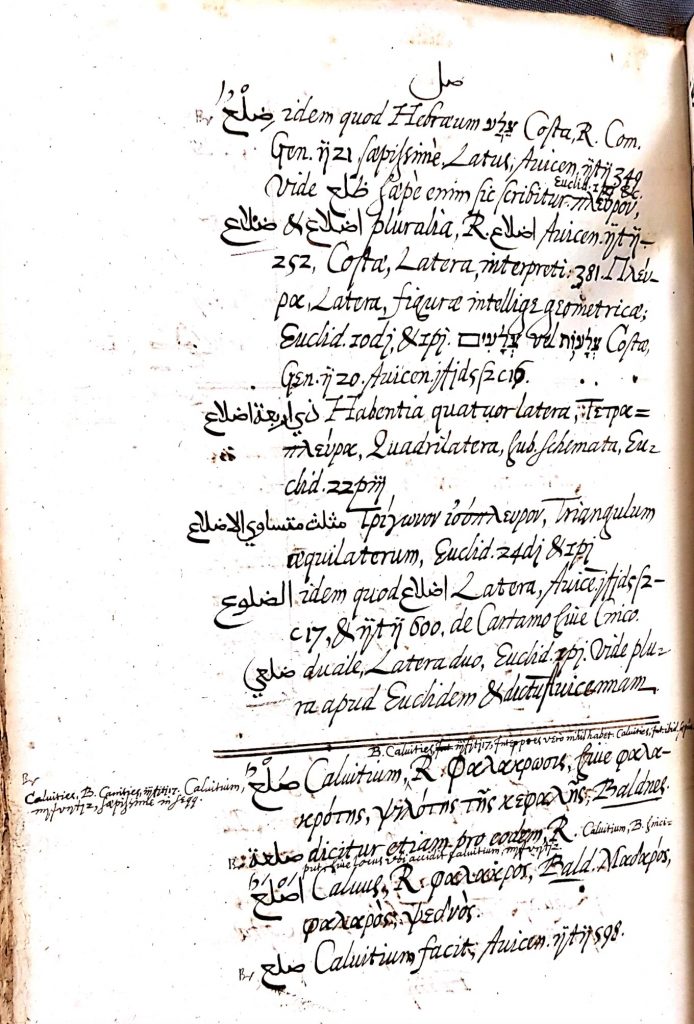
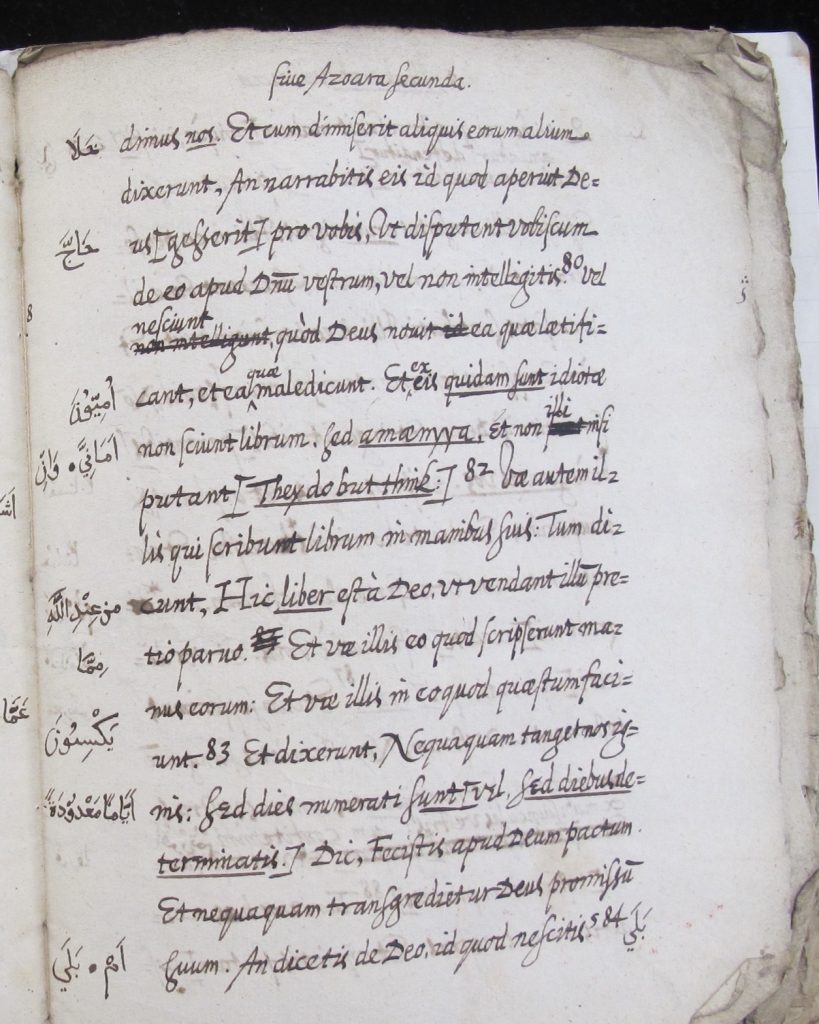
As he did not complete his Qur’ānic project and did not mention its existence in his essays, nor is there any detailed reference to it in previous sources, a hypothesis would be that Bedwell’s commentary and translation was done as a sub-project of his lifetime voluminous Arabic-Latin dictionary, not vice versa. Alastair Hamilton in his substantial study of Bedwell comments:
Soon after his graduation Bedwell wrote a number of those works which remained unpublished for many years, and he laboured on those ambitious projects so few of which were ever to be completed. The greatest of these, of course was the Arabic dictionary first conceived by Lancelot Andrewes. As early as 1595 Bedwell produced a sizeable specimen of some 8000 pages, and in 1599 a further one, of some 600 pages. These two works show how thoroughly he knew the Qurān, but they also show how few Arabic texts he had at his disposal.[5]
In addition to its modern classmark of MS Add. 285(48), Bedwell’s manuscript was given the classmark Ff-4-48. The two-letter classes were created in the early 18th century, following the arrival of the Royal Library of King George I in September 1715. At that point, all old manuscripts in the Library received new classmarks with English letters repeated (e.g., Gg., Ii., Ll., Mm.). In this vein, I assume that this manuscript was kept somewhere at CUL or another associated library next to other works of Bedwell, considered as a personal academic draft without classmark until 1715.
Furthermore, it includes the “A1”, “B1”, “C1” numbers which are commonly used in Erpenius’ personal manuscripts, and also marginal and interlinear notes by other scholars who might have been interested in studying Qur’ān since the 17th century. Whether Bedwell’s manuscript was in the possession of Erpenius needs further investigation.
Bedwell’s Qur’ānic Translation with Commentary
The title given to the manuscript by Bedwell is Corani Mohammedici (“the Qur’ān of Muhammadans/Muslims”). It includes 12 folios. It is not only a direct Latin translation but also includes commentaries to explain some meanings and concepts. It seems likely that Bedwell and Erpenius were aware of each other’s Qur’ānic studies projects, especially their translations of Q1. Erpenius’ translation and commentary appeared in his study of Q12 in 1617.[6] My comparison of their works demonstrates some large similarities. Nonetheless, unlike Erpenius’ verbatim translation separate from his commentary, Bedwell produced both translation and commentary alongside each other. This may be one of the main distinctions between Bedwell and Erpenius’ Qur’ānic-Arabic Studies. The former allowed himself greater freedoms while the latter restricted himself to standard interlinear translation of Arabic texts.
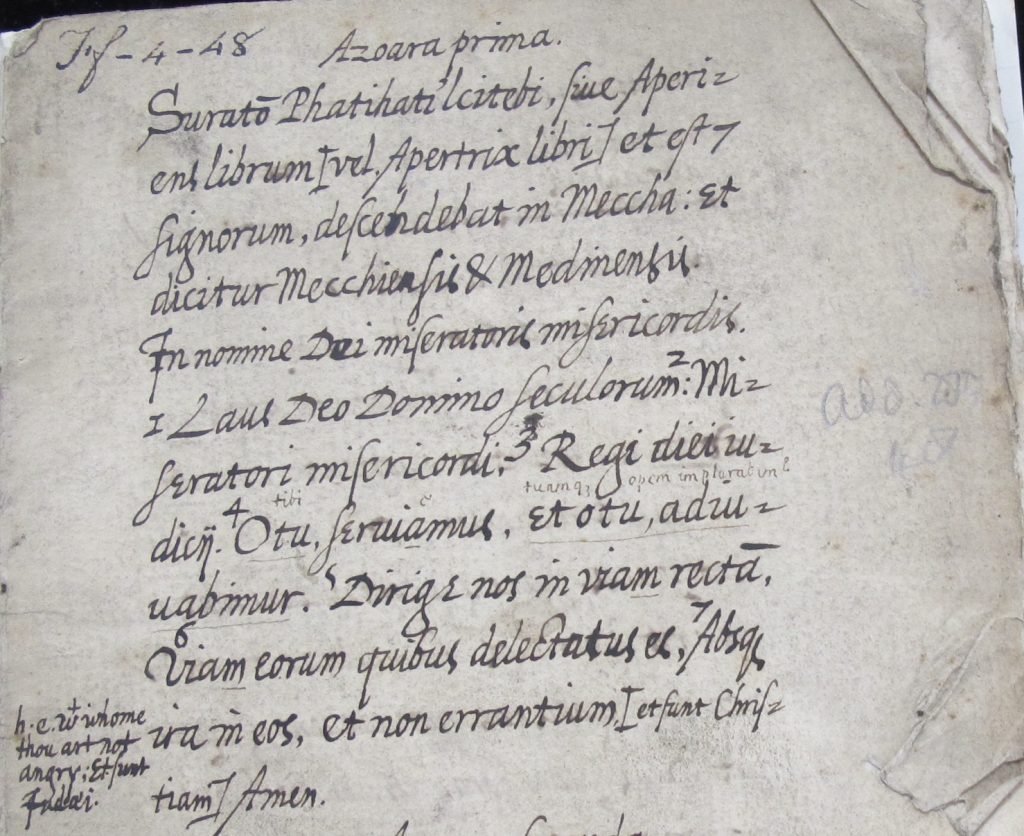
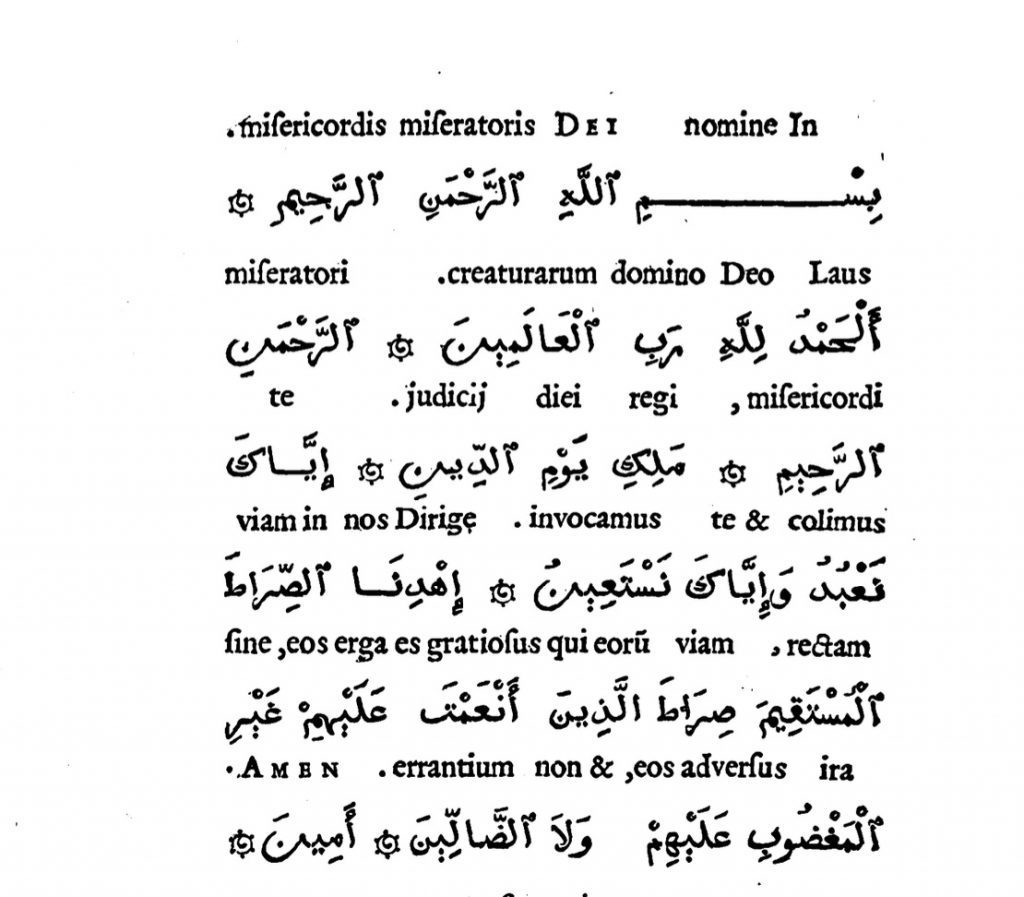
Bedwell’s work contains some extra material drawn from Muslim classical literature. It covers Q1 and Q2:1–139. It begins with descriptions about Q1 “Azoara prima” (The First Sura):
This is Sura Fatihat al-Kitab (Surato Phatihati’lcitebi), meaning the “Opener” with seven verses revealed in Mecca (descendebat in Meccha)
(fol. A1)
The way the Arabic phrases are translated into Latin, as well as using the term “Amen” at the end of Q1, demonstrates that Bedwell had an Arabic prototype before his eyes; perhaps his own MS Ii.6.48 which was donated to CUL and also ends with the term “Amen”. The last part of Q1:7, which reveals the exegetical nature of his translation is as follows: “et non errantium, et sunt Christiani” (not those who stray who are Christians). And the whole chapter is accompanied by an English gloss as “wit whome thou art not angry” (fol. A1).
Then, Q2 with the Latin title of “Azoara Secunda; Albakara” and “287 (sic) verses” (signorum) is present. To start his rendition, Bedwell relied on previous Muslim commentaries (e.g., Tafsir al-Jalalyn), those which interpret Q2:1 regarding the “mysterious letters” (Alif-Lam-Mim) as follows:
الم. الله اعلم بمراده بذالک|
only God is aware of the [real] meaning of Alif-Lam-Mim
Final Remark
If we accept that Bedwell produced this translation with commentary when he was compiling his Arabic-Latin lexicon, it should then be considered as the first known Islamic material in the possession of CUL. Moreover, we may assume that Bedwell’s MS Add. 285(48) is the first Latin translation of the Qur’ān with commentary produced in Cambridge, and perhaps the first wholly produced in the UK.[7]
[1] Thanks to Peter Riddell for his fruitful comments. All errors are mine.
[2] Alastair Hamilton, William Bedwell the Arabist: 1563-1632 (Leiden: Brill, 1985), p. 53.
[3] Ibid. Erpenius also learned different languages while he was in Venice, before becoming a professor at Leiden in 1613.
[4] E. G. Browne, A Hand-list of the Muhammadan Manuscripts, including all those Written in the Arabic Character, Preserved in the Library of the University of Cambridge (Cambridge: Cambridge University Press, 1900), p. 346.
[5] Hamilton, William Bedwell, p. 12.
[6] Thomas Erpenius, Historia Josephi Patriarchæ, ex Alcorano, Arabice (Leiden: ex Typographia Erpeniana Linguarum Orientalium, 1617), end matter.
[7] For more on history of the Latin translations of the Qur’ān: https://www.degruyter.com/document/doi/10.1515/9783110702712/html?lang=en#:~:text=In%201143%20Robert%20of%20Ketton,to%20the%20Muslim%20holy%20book
